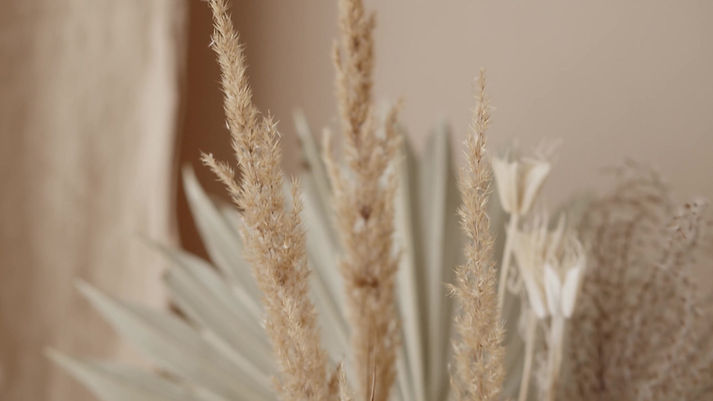

ditsy flowers flower press lining paper
Ditsy Flowers Flower Press Lining Paper is the perfect way to preserve your favorite flowers! This lining paper helps prevent molding and avoids moisture, so your flowers stay vibrant and beautiful for a longer period of time. Each pack includes 30 sheets of paper, so you have plenty to work with! Add this to your flower pressing kit and you'll be able to enjoy your pressed flowers for years to come.

"IF I HAD A FLOWER FOR EVERY TIME I THOUGHT OF YOU,
I COULD WALK THROUGH MY GARDEN FOREVER."
-ALFRED TENNYSON

lining paper
The Ditsy Flowers Flower Press Lining Paper is the perfect refill for your Ditsy Flowers Flower Press. It is designed to be used with similar flower presses as well and can be reused multiple times, making it an economical choice. This flower press lining paper helps preserve flowers, so you can enjoy them for years to come.


Fall in Love with Pressed Flowers
At Ditsy Flowers, we are excited to offer our customers our favorite flower press lining paper. It's not only reusable, but it's also incredibly durable, making it the perfect addition to your flower pressing kit. Our high-quality paper is designed to help you preserve all your favorite flowers, whether it’s from your garden, the field or the local nursery. Buy a refill today and start pressing your favorite flowers!



why lining paper is important:
Flower press lining paper, typically made of absorbent materials like blotting paper, serves as a protective layer between flowers being pressed. It absorbs excess moisture from the flowers, preventing them from becoming moldy or discolored during the pressing process. This lining paper helps maintain the quality, color, and texture of pressed flowers, ensuring that the final result is a beautifully preserved botanical specimen perfect for all your crafting needs.

instructions


lay down your bottom press board
Lay down the bottom board from your flower press.


lay down one drying plate.
lay down one sheet of lining paper.
On top of your bottom press board, you'll lay down one drying plate. You will lay down one sheet of lining paper on top of your drying plate.


trim flowers as needed
Trim any unwanted leaves or blemishes from your flowers.


arrange flowers
Evenly space your flowers with your tweezers, ensuring that no petals touch and allowing space for the flowers to flatten.


cover with a sponge
Cover the lining paper of flowers with a sponge.
Based on your flower press kit, you may repeat this process up to 8 times.


close your flower press
Once you've placed your last sponge, tighten your flower press kit. Try to close it as tight as possible to keep your flowers dry.

setting you up for success
There are a lot of questions that come along with pressing flowers. Let's go over some of the most common questions so you feel confident pressing your flower or greenery of choice.
What flowers should I choose?
-
Store bought
-
You can purchase a bouquet from your local florist or grocery store.
-
If you're going this route, you'll want to press the flowers sooner than later. This will ensure a higher quality of flower to press.
-
-
Wildflowers
-
You can choose to pick flowers from your garden, on a hike, or at your local park (or even highway).
-
When choosing these kind of flowers, you will want to pick them early in the morning after the dew has evaporated.
-
Pick a variety of flowers - some that haven't bloomed yet, some that have, etc. It will help make your designs look more natural.
-
Which flowers are easier or harder to press?
-
For beginners, choose flowers with single petals or flattened leaves. They will press much easier and quicker. Some flowers to start off with are daisies, pansies, hydrangea, cosmos, and single layer roses,




-
You will notice that some flowers will be harder to press. Some flowers are going to take much longer than three days to press due to them holding more moisture. If you are pressing leaves or plants, the bulkier they are, they are going to be more difficult to press.
-
The most difficult flowers to press are the ones who absorb / retain the most water. For instance bluebells and begonias take a very long time to lose moisture making them very prone to mold.
-
-
If you are going to choose a flower with larger petals, use your scissors or utility knife to cut and separate the petals before presses. You can reassemble the petals after pressing.
Should I dry my flowers before I press them?
-
One of the most important parts of pressing flowers is ensuring that they are completely dry before you press them. Moisture on a flower will not only take much longer to press, but flowers can become moldy.
-
Drying your flowers or leaves prior to pressing may overall save you time on pressing.
-
You can lay flowers out in the sun to dry before pressing them if they still have moisture on them.
-
You can also opt to bunch flowers together with rubber bands or twine and hang them upside down outside in direct sunlight.
How long will it take to press my flowers?
-
If you are sticking to single layer flowers with limited moisture, they can press within as little as three days.
-
If you are choosing a bulkier flower with more moisture, pressing can take up to a week or two.
-
You will know your flower or greenery is ready when it is no longer damp to the touch. Make sure to use your tweezers when removing them from the press because they can be brittle and you want to avoid any damage.



















